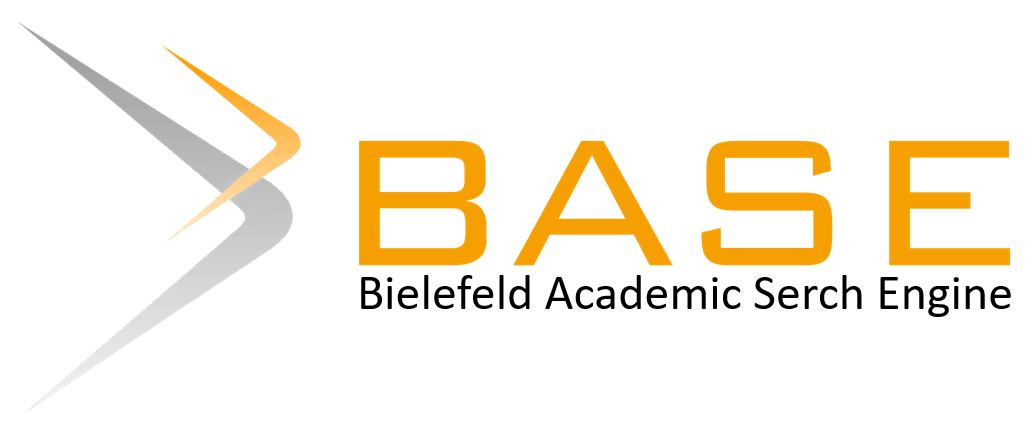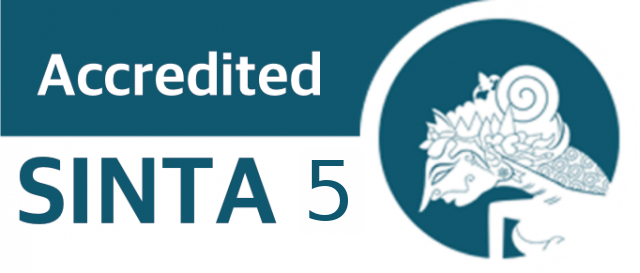Potensi Diet Soybean (<em>Glycine max</em>) Sebagai Alternatif Terapi Obesitas Dengan Dislipemia
DOI:
https://doi.org/10.30595/hmj.v5i2.13713Keywords:
Soybean, Glycin Max, Obesity, Hipercholesterolemia, Dyslipidemia, ReviewAbstract
ABSTRACT
Background :Â Obesity is becoming a major health problem in the world. Obesity rates are increasing in each country with a high risk of complications associated with the metabolic syndrome, such as hypertension, diabetes mellitus, dyslipidemia, and the risk of cardiovascular disease. Therapeutic management in cases of obesity with dyslipidemia through lifestyle modification approaches, dietary interventions, and drugs. However, long-term use of the drug is concerned about the possible side effects. Therefore, alternative dietary intervention and non-pharmacological therapy can be a better choice for treating obese patients with dyslipidemia.
Methods:Â This research method is a literature review study. Database searches were performed via PubMed, ScienceDirect, and Google Scholar with keywords ((soybean or glycine max) AND (dyslipidemia or hypercholesterolemia)) AND (obesity) published in 2012-2022. Based on the search results, found 7 matching articles.
Results:Â Based on a review of 7 articles, we found the benefits of soybeans (Glycin Max) in lowering total cholesterol (TC), lowering triglycerides (TG), increasing HDL-C levels, and lowering LDL level. The effect of long-term consumption of soybeans (Glycin Max) shows the potential effect of lowering MAD and increasing SOD due to long-term complications of oxidative stress from hypercholesterolemic conditions.
Conclusion : There is a positive effect of soybeans consumption in obese patients with dyslipidemia and the literature also shows the potential for preventing complications on the risk of oxidative stress hypercholesterolemia.
Keywords :Â Soybean; Glycin Max; Obesity; Hipercholesterolemia;Dyslipidemia; Review
Â
Â
Abstrak
Latar belakang :Â Obesitas telah menjadi masalah kesehatan utama di dunia. Angka obesitas terus meningkat pada setiap negara disertai peningkatan resiko komplikasi yang dapat muncul terkait sindrom metabolik, seperti hipertensi, diabetes melitus, dislipidemia, dan risiko penyakit kardiovaskular. Manajemen terapi pada kasus obesitas dengan dislipidemia yang lebih kompleks harus dilakukan melalui pendekatan modifikasi gaya hidup, intervensi diet, dan obat-obatan. Akan tetapi, penggunaan obat-obatan jangka panjang banyak memunculkan kecemasan terhadap efek samping yang dapat muncul. Sehingga alternatif intervensi diet dan terapi non farmakologi dapat menjadi pilihan yang lebih baik dalam penanganan pasien obesitas dengan dislipidemia.
Metode : Metode penelitian ini adalah studi literatur review. Penelusuran databaase dilakukan melalui Pubmed, Sciencedirect, dan Google Scholar dengan kata kunci ((soybeans or glycine max) AND (dyslipidemia or hypercholesterolemia)) AND (obesity) yang dipublikasikan tahun 2012-2022. Berdasarkan hasil penelusuran didapatkan 7 artikel yang sesuai. Â
Hasil : Berdasarkan telaah 7 artikel didapatkan hasil bahwa terdapat manfaat dari Soybean (Glycin Max) atau kedelai terhadap penurunan  kadar Kolesterol total (TC), penurunan kadar trigliserid (TG), peningkatan kadar HDL-C, penurunan kadar LDL. Efek konsumsi jangka panjang dari Soybean (Glycin Max) juga menunjukkan efek potensial dalam menurunkan MAD dan meningkatkan SOD sebagai akibat komplikasi jangka panjang dari munculnya stres oksidatif dari kondisi hiperkolesterolemia.
Kesimpulan : Terdapat efek positif konsumsi soy bean atau kedelai pada pasien obesitas dengan dislipidemia dan literatur juga menunjukkan adanya potensi pencegaham komplikasi terhadap resiko stres oksidatif hiperkolesterolemia.
Kata kunci : Soybean; Glycin Max; Obesitas; Â Hiperkolesterolemia; Â Dislipidemia; Â Review
References
DAFTAR PUSTAKA
- Klop B, Elte FJ, Cabezas C. Dyslipidemia in Obesity: Mechanisms and Potential Targets. Nutrients. 2013; 5: 1218-40.
- Mehraban MS, Malazy OT, Rahimi R, Daniali M, Khashayar P, Larijani B. Targeting Dyslipidemia By Herbal Medicines: A Systematic Review Of Meta-Analyses. https://www.sciencedirect.com/journal/journal-of-ethnopharmacology">Journal of Ethnopharmacology. 2021; https://www.sciencedirect.com/journal/journal-of-ethnopharmacology/vol/280/suppl/C">280, 114407.
Zhang T, Chen J, Tang X, LuoQ, XuD, Yu B. Interaction Between Adipocytes and High-Density Lipoprotein:New Insights into the Mechanism of Obesity-Induced Dyslipidemia and Atherosclerosis. 2019;18( 223): 1-11
- Postigo MC, Ortuno MI, Garcia DF, Huelgas RG, Tinahones FJ, Cardona F. Adipose Tissue Gene Expression of Factors Related to Lipid Processing in Obesity. PLoS One. 2011;6:1-8
Klop B, Jukema JW, Rabelink TJ, Cabezas C. A physician’s guide for the management of hypertriglyceridemia: The etiology of hypertriglyceridemia determines treatment strategy. Panminerva Med. 2012;54: 91–103
- Sundaram SS, Palaniappan B, Nepal N, Chaffins S, Sundaram U, Arthur S. Mechanism of Dyslipidemia in Obesity—Unique Regulation of Ileal Villus Cell Brush Border Membrane Sodium–Bile Acid. Cells. 2019; 8:2-16.
- Misra A, Shrivastava U. Obesity and Dyslipidemia in South Asians. Nutriens. 2013;5:2708-33.
Barquero SC, Leon AM, Perez MS, Estruch R, Casas R. Dietary Strategies for Metabolic Syndrome: A Comprehensive Review. Nutriens. 2020;12:1-21.
- Lee HS, Nam Y, Cheng YH, Kim HR, Park EB, Chung ES, et al. Beneficial Effects of Phosphatidylcholine on High-Fat Diet-Induced Obesity, Hyperlipidemia and Fatty Liver in Mice. Elsevier. 2014;118:7-14.
- Wei1 WJ, Xun T, Na L, Qun WY, Shuai L, Jin L, et al. The Impact of Lipid-metabolizing Genetic Polymorphisms on Body Mass Index and Their Interactions with Soybean Food Intake: A Study in a Chinese Population. Biomed Environ Sci.2014; 27(3): 176-185.
- Jiang Y, Noh SK, Koo SI. Egg Phosphatidylcholine Decreases the Lymphatic Absorption of Cholesterol in Rats. J Nutr. 2001;131:2358–63.
- Sharmin K, Ahmed R, Momtaz A, Chowdhury SA, Maya NA, Sharmin S. Effect of ethanol extract of glycine max (soy bean) On serum lipid profile of fat-fed hyperlipidemic rats. Bangladesh J Med Biochem. 2017;10(1):21-6.
- Setiawan DI, Tjahyono K, Afifah DN. Pemberian Kecambah Kacang Kedelai terhadap Kadar Malondialdehid (MDA) dan Superoxide Dismutase (SOD) Tikus Sprague Dawley Hiperkolesterolemia. J Gizi Klin Indo. 2016;13(1):20-6.
- Yamagata K, Yamori Y. Potential Effects of Soy Isoflavones on the Prevention of Metabolic Syndrome. Molecules. 2021; 26: 1-20.
Velasquez MT, Bhathena SJ. Role of Dietary Soy Protein in Obesity. Int. J. Med. Sci. 2007; 4,:72–82
Lu Y, Zhao A, Wu Y, Zhao Y, Yang X. Soybean Soluble Polysaccharides Enhance Bioavailability of Genistein and its Prevention Against Obesity and Metabolic Syndrome of Mice With Chronic High Fat Consumption. Food Funct. 2019; 10:4153– 65
- Lin X, Ma L, Racette SB, Spearie C, Ostlund RE. Phytosterol Glycosides Reduce Cholesterol Absorption in Humans. Am J Physiol Gastrointest Liver Physiol. 2009; 296(4): 931-35.
- Caponio GR, Wang DQ, Ciaula A, De Angelis M, Portincasa. Regulation of Cholesterol Metabolism by Bioactive Components of Soy Proteins: Novel Translational Evidence. Int J Mol Sci. 2020; 22(1):227.
Lammi C, Zanoni C, Arnoldi A. IAVPGEVA, IAVPTGVA, and LPYP, Three Peptides from Soy Glycinin, Modulate Cholesterol Metabolism in Hepg2 Cells Through the Activation of The Ldlr-Srebp2 Pathway. J. Funct. Foods. 2015;14:469–78.
- Park S, Lee JJ, Shin HW, Jung S, Ha JH. Effect of Soybean and Soybean Koji on Obesity and Dyslipidemia in Rats Fed a High-Fat Diet: A Comparative Study. Int J of Env Res and Pub Health. 2021;18:1-19.
- Theron W, Egal A. The effect of Consumption of Soy Food on The Blood Lipid Profile of Women : A Pilot Study from Qwa-Qwa. J Nutr Sci Vitaminol. 2013; 59:431-36.
- Setyaningsih A, Pramono A. Pengaruh Pemberian Snack Bar Kedelai Terhadap Kadar Kolesterol LDL dan HDL Wanita Hiperkolesterolemia. J of Nat Coll. 2014; 1: 68-75.
Downloads
Additional Files
Published
Issue
Section
License
For submission of manuscripts to the Herb-Medicine Journal, the authors must certify that:
I have been authorized by my co-author to submit the manuscript to the Herb-Medicine Journal
I hereby declare, on behalf of myself and my co-authors, that:
The submitted manuscript is original work and has not been published in another peer-reviewed journal or is being considered for publication by another journal. Also, the manuscript does not infringe any existing copyright or other third party rights.
The manuscript does not contain material that may violate the law, slander, or SARA, in any way, violates the terms and conditions contained in the agreement
I/we have taken care that the scientific knowledge and all other statements contained in the manuscript are in accordance with authentic facts and formulas and will not, if followed appropriately, harm the user
No liability shall be assumed by Herb-Medicine Journal, its staff or members of the editorial board for any injury and/or damage to persons or property as a matter of product liability, negligence or otherwise, or from the use or operation of any method, product instructions, advertising , or ideas contained in publications by the Herb-Medicine Journal
Authors who publish in the Herb-Medicine Journal certify that all authors have read and agree to the contents of the Cover Letter or the Terms and Conditions. Plagiarism is strictly prohibited, and by submitting a manuscript for publication, the author agrees that the publisher has the legal right to take appropriate action against the author, if plagiarism or false information is found. Once submitted to the Herb-Medicine Journal, authors will not withdraw their manuscript at any stage prior to publication.
The author owns the copyright and grants the journal rights for first publication with the work simultaneously licensed under a Creative Commons Attribution License which allows others to share the work with acknowledgment of the work's authorship and initial publication in this journal.
Authors may enter into separate additional contractual agreements for the non-exclusive distribution of the published journal version of the work (for example, posting it to an institutional repository or publishing it in a book), with acknowledgment of its initial publication in this journal.
Authors are permitted and encouraged to post their work online (for example, in institutional repositories or on their websites) prior to and during the submission process, as this can lead to productive exchanges, as well as earlier and larger citation of published work (See The Effects of Open Access).
Untuk pengiriman naskah ke Herb-Medicine Journal, penulis harus menyatakan bahwa:
- Saya telah diberikan otorisasi oleh rekan penulis saya untuk memasukkan naskah ke Herb-Medicine Journal
- Saya dengan ini menyatakan, atas nama saya dan rekan penulis saya, bahwa:
- Naskah yang dikirimkan adalah karya asli dan belum pernah diterbitkan dalam jurnal peer-review lain atau sedang dipertimbangkan untuk diterbitkan oleh jurnal lain. Serta, naskah tidak melanggar hak cipta yang ada atau hak pihak ketiga lainnya.
- Naskah tidak mengandung materi yang mungkin melanggar hukum, memfitnah, atau SARA, dengan cara apa pun, melanggar syarat dan ketentuan yang tercantum dalam perjanjian
- Saya / kami telah berhati-hati bahwa pengetahuan ilmiah dan semua pernyataan lain yang terkandung dalam naskah sesuai dengan fakta dan formula otentik dan tidak akan, jika diikuti dengan tepat, merugikan pengguna
- Tidak ada tanggung jawab yang ditanggung oleh Herb-Medicine Journal, stafnya atau anggota dewan editorial untuk setiap cedera dan/atau kerusakan pada orang atau properti sebagai masalah pertanggungjawaban produk, kelalaian atau sebaliknya, atau dari penggunaan atau pengoperasian metode, produk apa pun instruksi, iklan, atau ide yang terkandung dalam publikasi oleh Herb-Medicine Journal
Penulis yang menerbitkan dalam Herb-Medicine Journal menyatakan bahwa semua penulis telah membaca dan menyetujui isi Surat Pengantar atau Syarat dan Ketentuan. Plagiarisme dilarang keras, dan dengan menyerahkan naskah untuk publikasi, penulis setuju bahwa penerbit memiliki hak hukum untuk mengambil tindakan yang pantas terhadap penulis, jika ditemukan plagiarisme atau informasi palsu. Setelah diserahkan ke Herb-Medicine Journal, penulis tidak akan menarik naskah mereka pada tahap apa pun sebelum dipublikasikan.
Penulis memiliki hak cipta dan memberikan hak jurnal untuk publikasi pertama dengan karya yang secara simultan dilisensikan di bawah Lisensi Creative Commons Attribution yang memungkinkan orang lain untuk berbagi karya dengan pengakuan kepengarangan karya dan publikasi awal dalam jurnal ini.
Penulis dapat membuat perjanjian kontrak tambahan yang terpisah untuk distribusi non-eksklusif versi jurnal yang diterbitkan dari karya tersebut (misalnya, mempostingnya ke repositori institusional atau menerbitkannya dalam sebuah buku), dengan pengakuan atas publikasi awalnya di jurnal ini.
Penulis diizinkan dan didorong untuk memposting pekerjaan mereka secara online (misalnya, dalam repositori institusional atau di situs web mereka) sebelum dan selama proses pengajuan, karena dapat menyebabkan pertukaran yang produktif, serta kutipan yang lebih awal dan lebih besar dari karya yang diterbitkan (Lihat The Effect of Open Access).













